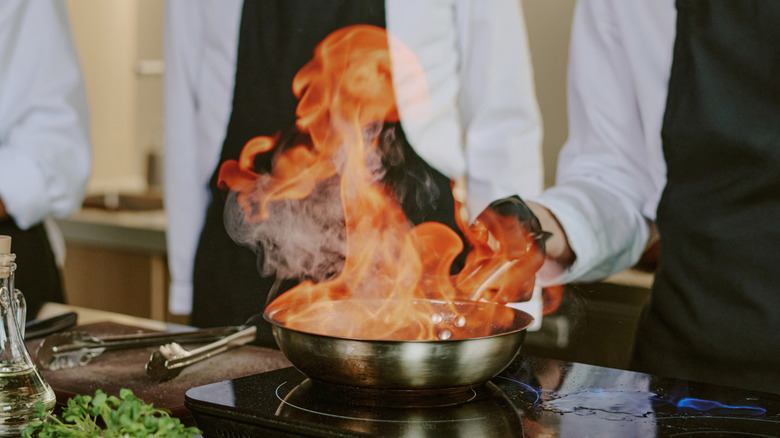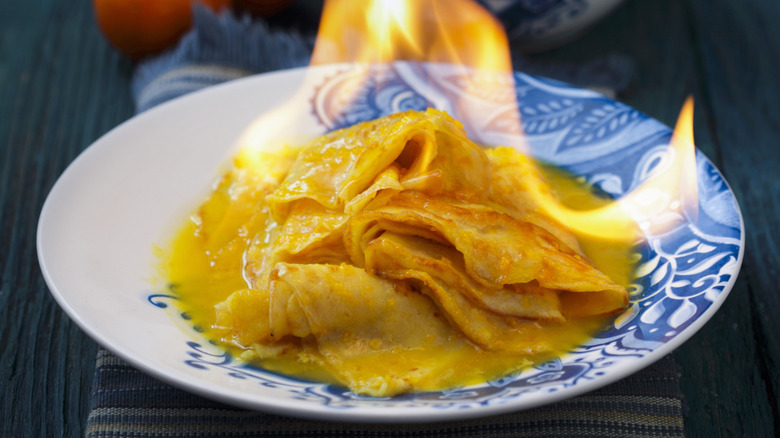Why Is Food Considered Fancy If We Set It On Fire?
Have you ever been to an upscale restaurant on the ritzy side of town and noticed the plate on the table next to you is on fire? No, not just sizzling the way fajitas do, but actual blue and orange flames leaping around the platter. If you've never seen it in person, you've probably seen it on social media at least once or twice, but what is it? We can probably thank the French for this show-stopping culinary technique known as flambé, which means "to flame," where someone takes a match to warmed alcohol and lights a dish on fire.
During the last hundred years, flambéing was considered the epitome of a fine dining experience. To flambé, a waiter will pour warmed alcohol onto a dish and set the entire thing ablaze with a match. Besides serving as a dream come true for pyromaniacs everywhere, flambéing puts on a real show. Restaurant dishes prepared tableside are meant to both wow the customer and capture the attention of others guests throughout the restaurant. The entire performance is meant to convey a sense of luxury and grandeur, something customers in both the 1970s and 2020s can appreciate.
A good flambé ignites both flavor and style
Although flambéing is revered as a dramatic culinary art form, it is also intended to alter the flavors of a dish. The kind of alcohol selected for the dish is meant to complement and accentuate existing flavors, while the dazzling flames take the edge off the booze. Typically, flambéing involves a higher-proof alcohol, such as cognac or brandy, that is poured onto a dish from a ladle, not the bottle. The fast-acting flames can add a charred enhancement to a dish, or even help caramelize existing sugars.
Flambéing works for both sweet and savory dishes, from a tender, flame-seared Steak Diane (a favorite of actor Vincent Price) to a delectable, toothache-inducing Cherries Jubilee (with its royal origin story), or a sugary, brûléed Baked Alaska. You could technically even flambé a drink — think flaming shots (just try not to set yourself on fire). Because nothing says "I'm fancy" or "this is elegance" quite like setting your meal (or drink) on fire.

